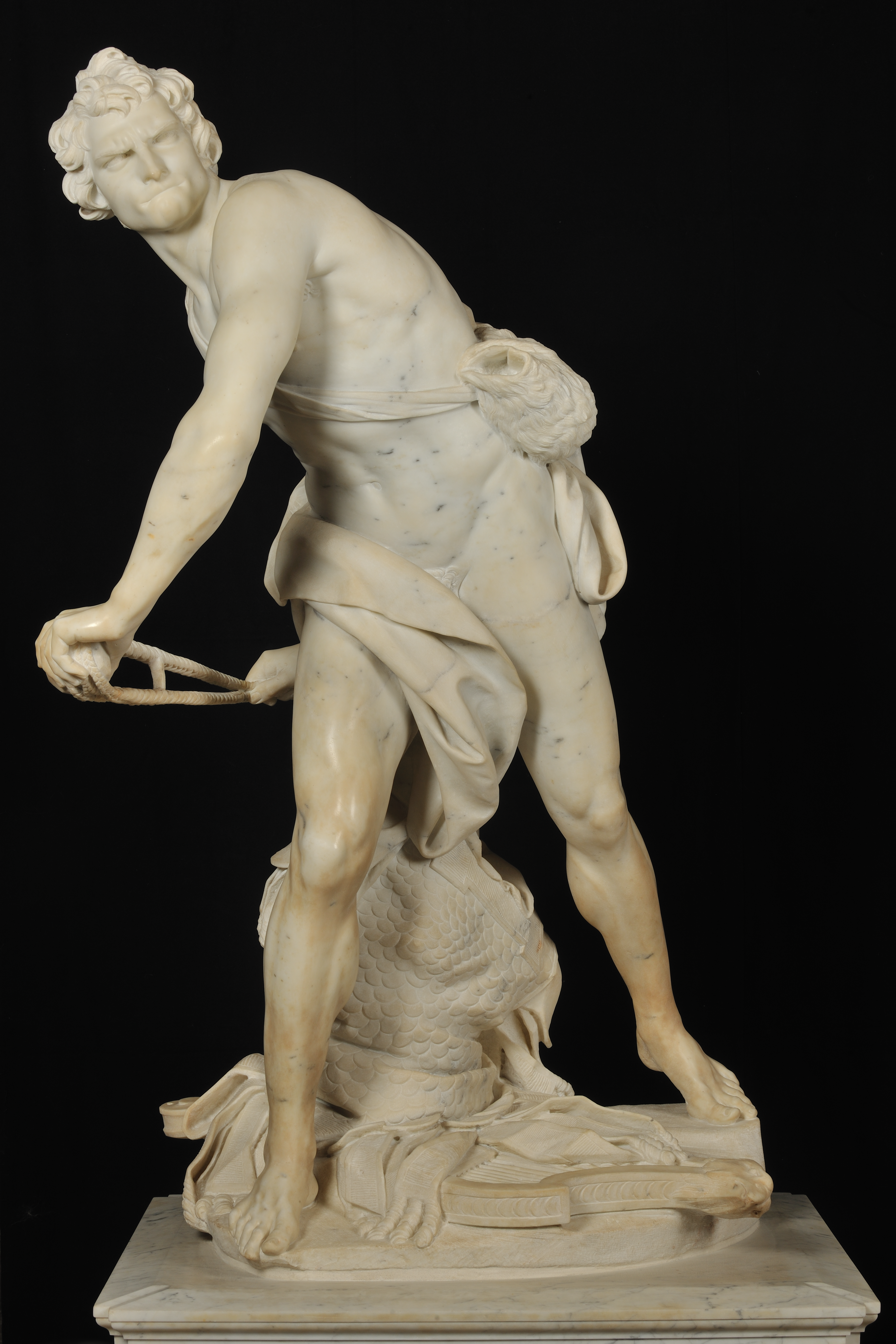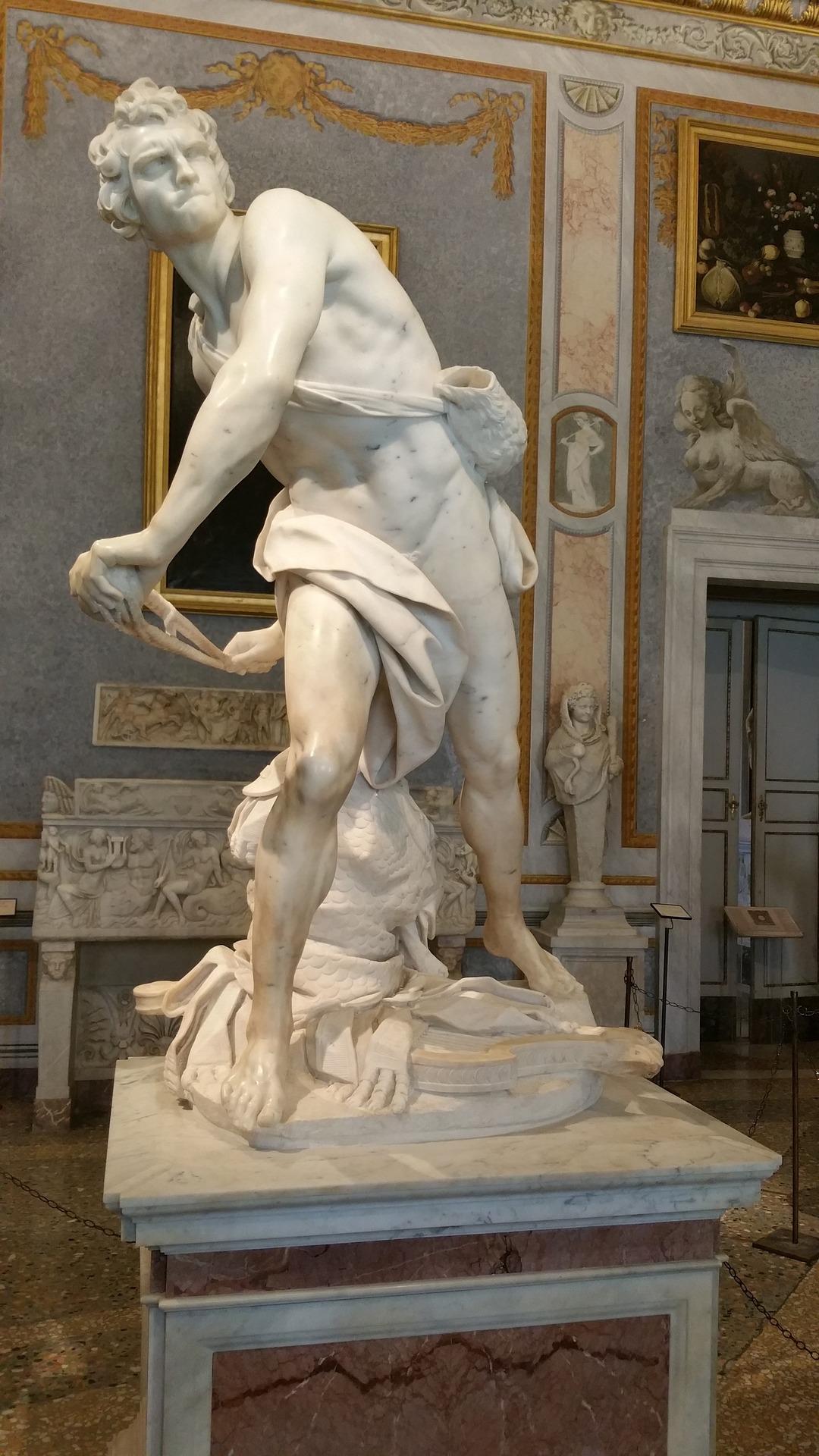Bernini’s Sculpture of David
Of all the famous art in the world, Bernini’s statue of David is one of the most well-known and respected. The statue represents a scene from the Biblical story of David and Goliath showing David about to throw the stone that beheads Goliath. It was created by Italian sculptor Gian Lorenzo Bernini and completed in seven months from 1623 to 1624.
Like every great artwork, there’s so much more to the statue of David than how it looks and what it stands for. Read on to find out about its meaning and background…
Background
Bernini created the statue of David under commission from one of his clients, Cardinal Scipione Borghese. It was made to decorate the Borghese Gallery in Italy.
Though only 24 at the time, Bernini was already quite successful. He abandoned a project he was in the middle of, a sculpture of Apollo and Daphne, to work on David.
The sculpture is inspired by a biblical scene in the Old Testament First Book of Samuel. The scene takes place during a battle between the Philistines and the Israelites. The Philistines’ champion fighter, Goliath, challenges the Israelites to end the fight in a single, hand to hand combat.
David takes Goliath up on his challenge. The statue depicts him as he is about to throw the stone from his sling at Goliath. The statue shows David wearing his shepherd’s attire. His armor, which was given him by the Israeli army, is down by his feet as David claims to fight better without it. He also has a harp by his feet as he was known for being a talented harpist.

Bernini, David, Galleria Borghese © Image Courtesy of Galleria Borghese
Style and Composition
Bernini’s statue is one of the first of the Baroque movement. It differs from previous Renaissance styles that showed statues from one frontal view. Instead, it is three dimensional giving the piece a sense of movement and depth.
It also invites viewers to walk around the statue so they can see it from different perspectives.
The statue also stands out as its subject is challenging an unseen entity. It captures a fraction of time in action bringing a sense of constant energy. In doing so, it merges art and life.
Bernini was known for creating art that showed emotions and David is no exception. If you look at his face, you see unmistakable notes of anger and aggression. He is frowning and biting his lower lip.
As the story goes, Bernini modeled the statue’s face after his own and would stop to hold up a mirror before sculpting to determine his next move.
The piece also shows hints of realism. It follows contemporary conventions on how members of the military should be portrayed with extreme proportions. Its protruding eyebrows, receding forehead and curved nose makes it resemble a lion. This is no accident as David later becomes the lion of Judah.
Influences
David was a popular art subject and was recreated in sculptures by Donatello (1400s), Verrochio (1473-1475), and Michelangelo (1501-1504). However, it varies from the other sculptures in that it is not self-contained. It interacts with the environment around it.
It is believed that Bernini’s inspiration for capturing action may have come from the Hellenistic period, specifically, the Hellenistic Borghese Gladiator. The motion the gladiator used in the sculpture was similar to how David swings the rock. Bernini may have also been inspired by Da Vinci who wrote a Treatise on Painting in which he touches on how to depict a figure throwing a stone.
“If you represent him beginning the motion the inner side of the outstretched foot will be in line with the chest and will bring the opposite shoulder over the foot on which his weight rests. That is: the right foot will be under his weight, and the left shoulder will be above the tip of the right foot,” Da Vinci wrote.
Bernini’s David can be found in the Borghese Gallery today. You can find tickets here.
